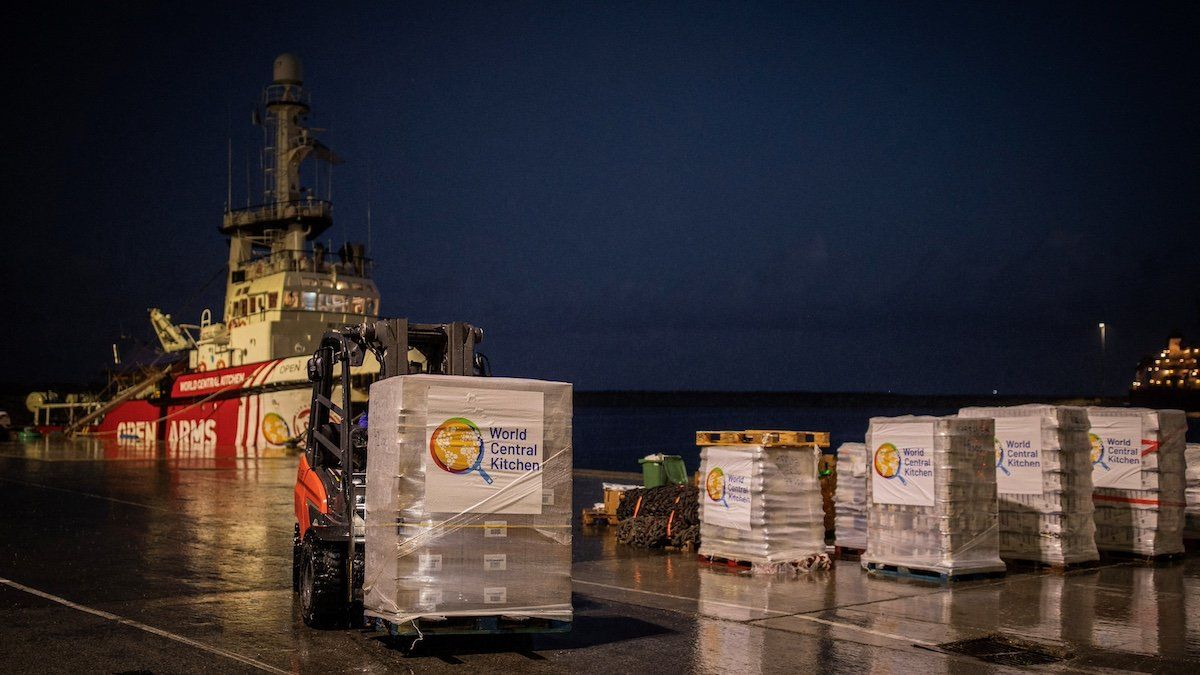A crane moves humanitarian aid for Gaza in a joint mission between NGOs Open Arms and World Central Kitchen at the port of Larnaca, Cyprus, March 8, 2024.
Santi Palacios/Open Arms-World Central Kitchen/Handout via REUTERS
Amid warnings that close to 600,000 Gazans face famine, the World Food Programme said six of its trucks managed to enter northern Gaza for just the first time in three weeks on Wednesday.
What aid is actually getting into the enclave, and by what routes?
By land: Before the war, an average of 500 aid trucks entered the Gaza strip daily. In the first week of March, the Israeli government, which controls access points into Gaza (see our explainer here), allowed in an average of just 164 per day.
By air: The US, UAE, Jordan, Egypt, and France have all begun airdropping food. But a single truck can deliver ten times as much food as a plane, according to the UN, and people who need food the most might not get any.
By sea: An EU-backed ship is sailing to Gaza from Cyprus now, carrying about ten trucks worth of aid. A US Army team is also sailing from Virginia with equipment to build a floating pier, which could theoretically receive enough food to feed Gaza, but will take at least two months to become operational.